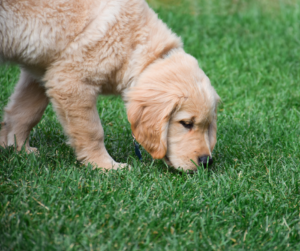Michael Baugh CDBC CPDT-KSA
Training is important. I’m a dog trainer. It should come as no surprise that I’m a proponent of training your dog. We can use positive reinforcement training to change your dog’s behavior. The process is straightforward and really effective.
But, there is more to a good behavior change plan than just training. We need to take our dog’s wellbeing and lifestyle into account, all of it. Everything matters.
What’s going on inside? We all know what it’s like when we don’t feel well. It affects our emotions. It can even make us grumpy. This is why it’s so important to have a vet thoroughly check out our dog before we begin a training plan. I’ve actually resolved lots of cases by referring clients back to their vet. Smart veterinarians can diagnose and treat underlying illness, pain, or discomfort. Ask your vet to go looking for trouble. A dog who feels good will behave better. It’s really that simple.
Can our dog just be a dog? Our dogs need to do what dogs do. Dogs are built to seek, sniff, and forage. They are uniquely designed to chase and grab and tear stuff up. Lot’s of dogs get in trouble because they are trying to fulfill these needs on their own. Many get frustrated when they can’t. The good news is we can give our dogs safe opportunities to do these natural behaviors without any trouble. There are great interactive toys and food-delivery games available. Make time for appropriate play with humans. Think tug or retrieve. Dogs with good social skills should have small playgroups with other dogs. Avoid dog parks of giant daycare mosh pits. In short, let dogs be who they are. Dogs.
 What about sniffing? Walks are fine. But, sniff adventures are even better. Let’s get our dog out on some rural trails. Urban parks are okay, too. The idea is to let our dog lead the way and sniff to his heart’s content. This might be the best example of letting our dog be a dog. Sniffing is so important for dogs. Follow this link to read more about what trainers are calling decompression walks for dogs.
What about sniffing? Walks are fine. But, sniff adventures are even better. Let’s get our dog out on some rural trails. Urban parks are okay, too. The idea is to let our dog lead the way and sniff to his heart’s content. This might be the best example of letting our dog be a dog. Sniffing is so important for dogs. Follow this link to read more about what trainers are calling decompression walks for dogs.
Does our dog have time to relax and sleep? I think we forget about this one. With all the training, mental enrichment, and exercise we are adding to help our dogs, we forget the importance of down time. Dogs sleep 12-14 hours a day, sometimes longer. Sleep helps solidify learning. A lack of sleep can lead to irritability and hair-trigger impulsiveness. Let a sleeping dog lie. More importantly, let’s give our dog time and safe quiet spaces to relax and sleep.
In some cases, satisfying our dogs basic physical and mental needs can alleviate behavior issues altogether. In every case, though, it is an essential part of our overall plan. We have to look at the whole dog and the wholeness of his daily life. Training is part of that, a big part. It’s how we open lines of communication and cooperation with our dogs. It’s how we help him learn to navigate life in an unpredictable human world. Now we know how important it is too look carefully at his world, too. What needs aren’t being met? What can we do better? How can we clear a path so that our dog can be more successful, more quickly, more easily? It’s the path that leads to common ground, where everything that we ever hoped for from our dog overlaps with everything he already is.
Michael Baugh teaches dog training in Houston TX. He specializes in aggressive dog training.
